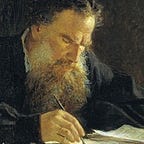Galileo Discoveries: What did Galileo Galilei invent and discover?
Galileo Galilei (Born, 15 February 1564 — Died, 8 January 1642) was a mathematician, physicist, astronomer, philosopher, engineer and Italian inventor whose discoveries and inventions make it one of the main references of the Renaissance and the scientific revolution. In this article, we cover the following topics. Who was Galileo Galilei? Galileo Discoveries. What did Galileo Galilei invent and discover? And Galileo Galilei scientific contributions.
Galileo Galilei was born in Pisa, Italy. Galileo has been called “The Father of Modern Physics” “The Father of Observational Astronomy” “The Father of Scientific Method” and “The Father of Modern Science”.
Although Galilei was going to study medicine at the University of Pisa, those were the wishes of his father, he finally studied mathematics and for many years he devoted himself to teaching this discipline at the same University.
He is often credited with being one of the first scientists to clearly defend that natural laws are mathematical laws. His experimental work is considered one of the first historical milestones in the implantation of the scientific method and the emergence of the so-called modern science.
Galileo Discoveries:
Galileo became famous for several experiments, inventions, and discoveries, highlighting the astronomical discoveries, the demonstration of the heliocentric model, the manufacture of the first recorded astronomical telescope and its mathematical postulate about the movement of objects and other physical phenomena. Galileo Galilei invented numerous instruments and contributed considerably to the advancement of engineering at that time.
Here is the complete list of Galileo Discoveries:
One of his first invention for which he gained popularity was a Geometric and Military Compass that sold for 50 lire and taught to use for 120.
Galileo Galilei’s Geometric and Military Compass
As a geometric instrument, the compass allowed to build any regular polygon and perform several calculations, for example, calculate the area of any polygon or circular sector. As a military instrument, it allowed calculating the elevation and loading of the guns.
2. Isochronism of Pendulums
Galileo discovered the isochronism of pendulums in 1583. According to this property, the time to pendulum needs to complete the cycle depends on the length of the arm, not on the weight of the pendulum. Being already blind and in the last years of life, Galileo designed equipment for pendulum clocks, the design that Christiaan Huygens would apply in 1647 to build the first pendulum clock in history.
3. Hydrostatic balance
In 1585 Galileo invented a hydrostatic balance, an instrument that allowed calculating the weight of objects according to the displaced water.
4. Thermoscope or water thermometer
Based on similar properties for hydrostatic balance, in 1593, Galileo has built a thermoscope or water thermometer, an instrument that used the expansion and contraction of air to move water contained in a tube with a temperature scale. Thermometers evolved current thermometers.
5. Telescope
The telescope is one of the famous discovery in the Galileo Discoveries. In 1609 Galileo would build one of his most famous objects, the telescope, but Galileo did not invent the telescope. What Galileo Galilei did was to improve the telescope and be one of the first to use it to observe stars, planets and other objects in space. Yes, the construction of the first patented refracted telescope is attributed to it. Thanks to his observations, Galileo demonstrated the heliocentric model of Copernicus, which cost him the confrontation with the Catholic Inquisition for Heresy.
Scientific Contribution in the field of Astronomy
Thanks to its telescopes, Galileo was able to observe stars and planets that had never been done before. In 1610, he discovered the satellites Io, Europa, Ganymede and Callisto, known as Galilean satellites of Jupiter. Jupiter is the largest planet in the solar system and has 69 satellites. Although Galileo’s telescopes were the best of the time, they could only observe the 4 largest ones.
He could also verify that these satellites orbited around Jupiter, proof that he would use, among many others, to defend his opposition to the geocentric model. For the first time objects were observed in space that clearly did not orbit around the Earth.
In that same year of 1610, in the month of September, Galileo was observing the planet Venus and could describe in it phases similar to the lunar phases, something that predicted the Copernican model and not the geocentric model.
Rings of Saturn are also among his astronomical observations. Although, he could not determine that they were rings and, when they appeared and disappeared depending on the angle of vision, they were very confusing for him. He also observed Neptune, a planet he described as an unimportant dark star, not as a planet. In the Milky Way, it described until then as a nebula, Galileo was able to observe numerous stars from which he tried to measure its apparent diameter.
Originally published at everydayscience.blog on January 31, 2019.
